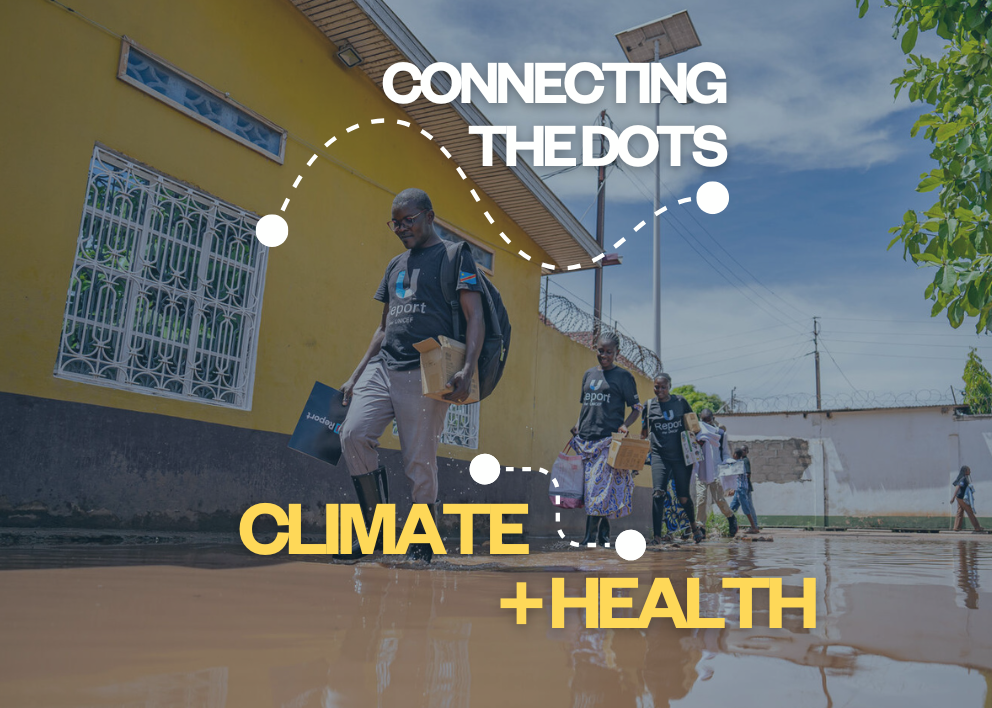Connect the Dots: Climate and Health
As the global climate crisis grows, its effects are becoming increasingly visible—not just through rising sea levels or extreme weather, but also in a more insidious form: the spread of infectious diseases.

While our planet heats up, it’s creating the perfect conditions for certain diseases to make a comeback, or even pop up in places they’re never been before. The impact of our changing climate on vaccine-preventable diseases, particularly in already hard-to-reach regions, requires a multisectoral approach. From shifting disease patterns to the breakdown of health systems, the consequences of inaction are complex and far-reaching.
The Climate-Disease Connection
Environmental changes are quietly fueling the spread of climate-sensitive disease in more ways than one.
Warmer temperatures, flooding, droughts, and deforestation are widening the habitats of mosquitos and other insects that transmit disease. Take malaria, for instance—once confined to lowland, tropical zones, the deadly disease is now appearing in highland areas that were previously too cool for mosquito survival due to unusually high temperatures, increased rainfall, and heightened humidity. Diseases like yellow fever, dengue, and chikungunya have made headlines lately as they undergo similar trends.
Moreover, climate disasters like floods and droughts disrupt access to clean water and sanitation, which increases the risk of waterborne diseases like cholera—which is surging across the African continent, from the ongoing outbreak in Sudan to alarmingly high case counts across the DRC—and typhoid. Extreme weather events are also displacing people in large numbers, which can further destabilize health infrastructure and interrupt supply chains, leaving large populations (particularly in fragile or conflict-affected settings) without access to lifesaving treatments that keep disease at bay.

The World Health Organization estimates that the direct costs of damage to health from climate change could reach up to $4 billion each year by 2030. These effects are disproportionately felt in lower-income countries, which often last the systems or resources to mount effective responses.
So, What do Vaccines Have to Do with It?
Vaccines don’t just protect us from getting sick, they also keep communities insulated from outbreaks when everything else may feel like it’s falling apart. These lifesaving jabs can be thought of as a pillar of climate resilience, or even a climate adaptation tool: a smart, effective way to prevent outbreaks before they can start, especially in areas hardest hit by environmental changes.
Thanks to organizations like Gavi, the Vaccine Alliance, millions of people around the globe have access to vaccines that fight some of the aforementioned climate-sensitive diseases, including cholera, malaria, yellow fever, meningitis, and more.
“In my country—where climate change and displacement are making it harder, not easier, to deliver health services—vaccines are an essential way to manage outbreaks and save lives.”
Dr. Abdelmadjid Abderahim, Chad’s Minister of Public Health and Prevention
And the response efforts at the intersection of health and climate aren’t just about supplying vaccines. Gavi has also found ways to reach people who have been left out of health systems altogether, even in climate disasters. One such example is following the deadly floods in Pakistan in 2022, when Gavi—working with the World Health Organization and others—helped to set up mobile response teams and employ rapid disease surveillance.

No Country is Insulated
Just as diseases don’t recognize borders, a changing climate doesn’t either. This is not a problem exclusive to low-income countries. Take West Nile virus in New York state, for example.
West Nile virus first appeared in the state in 1999, and thanks to warming temperatures, it’s now of endemic concern. Warming trends are reshaping disease dynamics—even in the U.S. New research tells us that recent strains of the virus are more transmissible at warmer temperatures, with a 29.3% increase in transmission potential during hotter summers.

This trend highlights a dangerous feedback loop: as temperatures rise, so does the evolutionary fitness of certain viruses—but current models often underestimate this risk. It is crucial to consider the changing nature of pathogen behavior in warmer conditions (AKA, we cannot discuss infectious disease without discussing the climate).
It’s Time to Connect the Dots
Health experts, scientists, global leaders, and more are starting to join the dots between climate change and disease. At the 2023 United Nations Climate Change Conference (COP28), the first ever Health Day was instituted, underscoring the need for intersectional conversations that span health and climate. Moreover, Gavi is actively engaging with global stakeholders to ensure vaccine equity and pandemic preparedness are central to climate adoption strategies.
Ultimately, vaccines are not just a shield against disease, but a lifeline for communities facing an increasingly unstable world. As we confront the twin crises of climate change and emerging disease threats, immunization must be at the heart of our adaptation strategies.
Because in the face of rising temperatures, stronger storms, and shifting disease patterns, an unexpected tool can help us protect our future: vaccines.

